To suggest that electric cars are having a painful birth would be a colossal understatement. Tesla clearly plowed this field and quickly recognized that the lack of a charging infrastructure was going to be a problem and, with reasonable effectiveness, dealt with it tactically. However, those “tactical” chickens are about to come home to roost and it probably won’t be pretty.
Jaguar, the first company to offer a true alternative to the Tesla, did some things very right and some very, very wrong. Rather than developing a Tesla killer, it instead created an impressive SUV that could have been far better.
I bought the Jaguar I-Pace, one of a tiny handful in customers’ hands right now, and I think the perfect electric car would be a blend of the Model 3 and the I-Pace (pictured above). I’ll explain why and then close with my product of the week: a high-tech hearing aid I saw at CES that might give you one of Superman’s powers.
Tesla’s Brilliance and Nasty Mistakes
While Tesla isn’t known for being the smartest car maker, having made a ton of manufacturing mistakes over the years, it is by far the most experienced company with electric cars. Its brilliant decisions include coming in at the top rather than the bottom of the market, as Fiat did. Fiat loses a ton of money on every electric car it sells. While Tesla did lose money, its losses were tied to explosive growth and not the profitability of the Model S.
Tesla built a charging infrastructure reasonably, though far from completely, dealing with one of the two electric car problems. It has the closest thing to gas station equivalence for chargers right now, particularly when it comes to high-speed chargers, which Tesla calls “Superchargers.” Finally, it focused on making the cars really safe, and actually broke some of Consumer Reports testing equipment because its cars were so robust.
However, Tesla made some really nasty mistakes as well. It didn’t use experienced manufacturing teams, either to build the plant or manage it, resulting in avoidable losses and huge delays.
The most popular vehicles in the U.S. were SUVs and pickups. Tesla was slow to develop SUVs, and the one it brought to market, the Model X, was a reliability and complexity nightmare (it also was pretty unattractive).
Ironically, pickup trucks likely would be ideal electric cars, because people generally don’t drive them long distances. As a work vehicle, the battery could have done double duty as a power source for tools. It is therefore interesting to note that the first electric pickup won’t come from Tesla or Ford, but from another new company that Tesla or Ford likely should just buy.
The problem with the Tesla charging stations is that they don’t comply with the Asian or European/U.S. standards for plugs or core technology.
Given the required electronic integration with direct high-speed chargers and the car, there is some doubt whether adapters for the European/U.S. fast-charging stations will work at full power, if at all, with a Tesla.
More importantly, unlike gas stations, which can be incredibly profitable, Tesla’s charging stations are largely cost centers that mostly just work with Teslas. Gas stations that could fuel only Fords wouldn’t make a ton of economic sense for the long term. Public chargers that work only with Teslas won’t be economically effective in the long term either.
The Model 3 likely should have been a small SUV rather than a sedan, to get access to a larger potential market. Quality appears to be relatively poor for that car, with owners reporting missing parts, lots of paint damage, surprise shutdowns, and incomplete assembly issues.
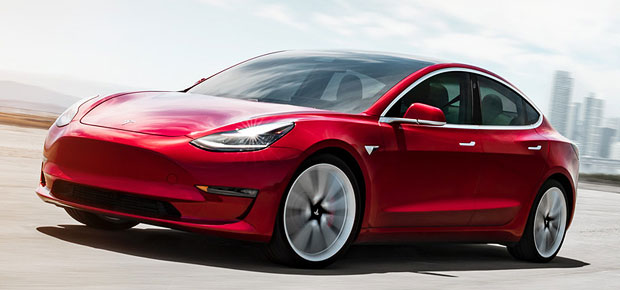
Such complaints weren’t that uncommon in years past, but with current quality control technology they are very uncommon today with U.S., Asian, or German cars (though they do happen).
Even with all of these qualifications, Tesla is largely viewed as the gold standard for electric cars. By a significant margin, it is the company to beat.
The Jaguar I-Pace: A Pretty Face Hides Some Ugly Mistakes
This is clearly subjective, but of the shipping electrics (and most that aren’t shipping, the Porsche being the obvious exception), I think the I-Pace is the best-looking car. It does conform to the European/U.S. standard for charging plugs (both normal and high speed), and it is a member of the far more popular SUV class.
Fit and finish are first rate, though lower-cost versions have been accused of having too much plastic (something that also plagued the Model 3). As with the Tesla, there appears to have been a strong focus on handling and safety.
With clear Range Rover influence, the I-Pace also appears to have decent off-road capability, although taking an electric off-road for any distance is problematic, due to a lack of chargers and an inability to carry anything like spare fuel.
The Tesla charger network supports mostly Teslas. (You can get an adapter to use non-Supercharger Tesla stations, but these take hours to charge the car and are impractical outside of emergency use).
While there are networks of chargers being installed, we are far from critical mass with high-speed chargers, which aren’t stable at the moment. Yes, the plug is set, but the latest chargers are 450KW monsters, or nearly 4x as powerful as existing Superchargers. Right now, there are no cars that can use this power (including the I-Pace). Worse, there is no communication from Jaguar to indicate if there is a path to upgrade the car at some later date.
While expected range was supposed to be in the mid to high 200-mile range, the I-Pace has fallen short, even though it has a huge battery. This may be because Jaguar is ensuring the battery will last for the life of the car, or it could be the result of using a front motor that doesn’t freewheel when not in use. There is no clarity on the cause, however, and Jaguar so far has not communicated a fix.
One big difference is that patching on a Tesla is like Christmas, because you often get cool new surprise features. One of my last patches on the Jaguar rendered the center display inoperative, and it took nearly three weeks to get the car so it could be driven again. Over-the-air patching is now a well-known process with the tech community, and there is no reason this should have happened it proper testing practices had been used.
One weird difference between the Model 3 and the I-Pace is that the Model 3 isn’t positioned as a performance car, yet it not only has a track mode (good luck fast-charging it at the track), but also has a performance version that would embarrass most muscle cars.
The I-Pace is positioned as a performance car and it doesn’t seem to have the same level of performance that the Model 3 does in its performance configuration. This is the same issue I had with the Tesla Model S vs. the Fisker Karma.
The Tesla looked like a regular sedan but was incredibly fast, while the Fisker looked like a supercar but performed in line with a relatively slow sedan. It felt like the cars’ guts were (or should have been) swapped at birth. The car that didn’t look fast was, and the car that did wasn’t. Granted, the I-Pace would dust a Fisker, but that really isn’t saying much.
Wrapping Up: I Still Prefer the I-Pace
The primary reason that I prefer the I-Pace is that I don’t drive sedans. I drive sports cars and small SUVs. Right now, Tesla doesn’t build a car that is in my preferred class. If there were an I-Pace with the high-end Model 3’s performance, or a Model 3 SUV, I would be on the shortlist to buy it.
I live in Bend, Oregon and most everything I do is within 30 miles of the house. I have five cars, so if I need to go a longer distance, I’ll pick something else. The I-Pace has been brilliant in the snow and ice (I have Bridgestone Blizzard tires on it), and it is rare enough that people do compliment the car and wave when they see it (those exchanges are always fun when you have a relatively unusual ride).
The I-Pace is one of the most comfortable cars, both in the front and back seats, that I’ve ever owned. I own three Jaguars and used to be a Jaguar mechanic in my youth — but honestly, given my experience, if Tesla were to build a small attractive SUV, I’d likely switch. To keep me on board, Jaguar would have to improve its customer communications, and better protect the car from future technical advances, particularly with charging.
Jaguar simply hasn’t been enlisting advocates as well as Tesla does, and this is something only Porsche seems to fully get. That may explain why Porsche’s coming electric has been sold out, mostly to old Tesla owners. (It also is the first car that will be able to use the new 450 KW chargers, and on paper it is faster than a Tesla.)
Would I buy the car again? In a minute. I really am having a ball with the car. Still, car companies like Jaguar need to understand the disruptive nature of Tesla’s customer approach. Otherwise, Tesla will continue to outmaneuver them, and it must be embarrassing to be upstaged constantly by a firm that is so new in what has been a well-established market.
By the way, I keep getting notices from Jaguar wanting me to write a review of the I-Pace, but each review I’ve written has been kicked back for things like mentioning Tesla or the problems I’ve had with the car. You don’t learn by forcing reviewers to talk exclusively about the positive. Oh, and the review submission form goes only to 2018 and this is a 2019 car .
My hearing is good for my age, though increasingly I have noticed that I’ve been missing things on TV that I should have heard. The Livio Smart Hearing Aid got my attention because it not only boosts your hearing (kind of like super hearing for those who don’t have a hearing disability), but also performs functions like a good smartwatch.
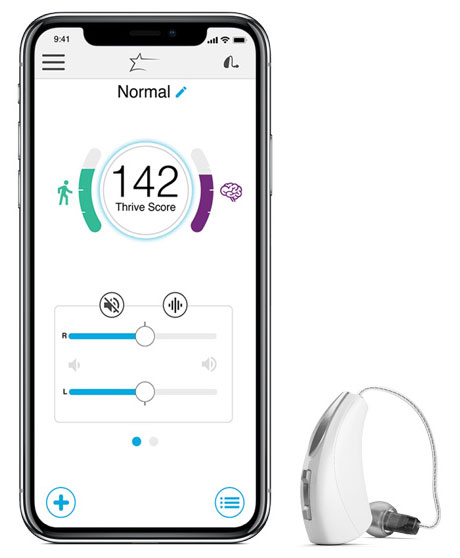
For instance, it will send out an alert if you fall. It integrates a digital voice assistant into the solution so you can get directions, ask questions, and get the help you need when you need it.
The full list of features includes body and brain tracking, heart rate monitoring, fall detection and alerts, a virtual assistant, a voice-to-text tool, and real-time translation capability. It is a behind-the-ear design, so it isn’t tiny but, unless you are looking for it, it is reasonably well concealed.
This would be very useful for transcribing meetings, capturing threats from misbehaving coworkers that later might be denied (and it is a hearing aid), and getting help to you if you should get into trouble.
This could be a critical feature for something that is still emerging, a personal safety and security service. Imagine — a child being kidnapped could just say a trigger word, and that alone could alert parents and police both to the nature of the problem and the location, while the direction from the dispatcher would be heard only by the child.
You could get verbal alerts if you were jogging into danger, get alerts of impending catastrophic weather events without needing to see your phone, and get far more accurate heart rate measurements.
Because this hearing aid could make both those we care about and us far safer, the Livio AI Hearing Aid from Starkey Technologies is my product of the week. (It even does a decent job if you want to listen to music on your phone.)

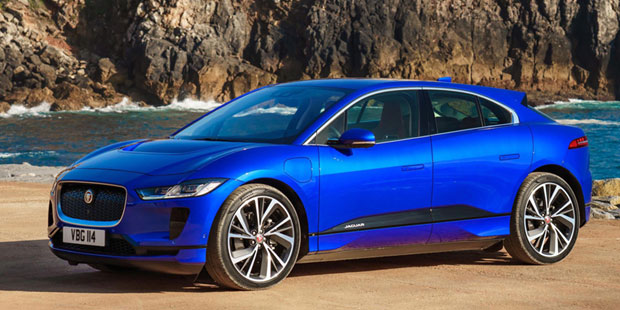





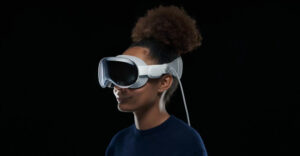





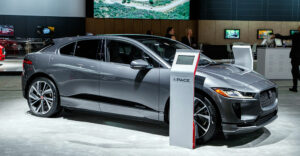











































None of them, over priced and stupid expensive to fix. Not designed to last. Give me a kit to convert my existing vehicle. More fake banker debt, PASS!